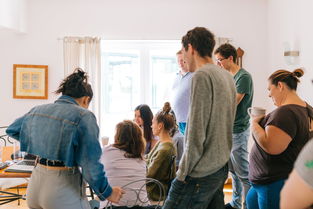In recent times, there has been a rise in concerns about issues related to artistic and cultural expression within Vietnam. As an自媒体 author, I have observed how these issues have been under scrutiny, with many people pointing fingers at each other, attempting to clarify misunderstandings and bring transparency to the situation.
Firstly, it is important to understand that the Vietnamese government does not regulate the production or distribution of artistic works. In fact, they promote freedom of expression for artists and support local creative industries. This policy was adopted to promote national unity and cultural diversity.
However, some critics argue that this approach fails to address the root causes of artistic misconduct and corruption. They claim that the government's relaxed regulations provide conducive environments for artistic fraud and manipulation.
Furthermore, it is vital to note that there is no one-size-fits-all solution when dealing with issues related to artistic and cultural expression. The needs and concerns of different groups, such as students, professionals, and communities, may vary widely. Therefore, addressing these issues requires a nuanced approach that takes into account the diverse perspectives and interests of all stakeholders.

One example of this approach is the Vietnamese government's support for the development of art education. By providing funding and resources for art programs and institutions, the government aims to ensure that talented young people can pursue their artistic dreams while also developing valuable skills and knowledge.
Another example is the promotion of art tourism. By showcasing traditional Vietnamese art forms and engaging visitors through workshops and activities, the government aims to foster appreciation and understanding of the country's rich cultural heritage.
Additionally, initiatives aimed at combatting corruption in the arts industry can be beneficial. For instance, anti-corruption policies and awareness-raising campaigns can help to create a more transparent and accountable environment for artists and cultural organizations.
Finally, involving civil society in discussions on artistic and cultural issues can be invaluable. Community organizations and individuals can play a crucial role in identifying and addressing challenges and promoting positive change in the field.
Despite these efforts, there are still challenges that need to be addressed. One of the biggest concerns is the lack of access to funding and resources for artists and cultural organizations. This can hinder their ability to produce high-quality work and engage with audiences.
Another challenge is the widespread belief among some people that the government should control every aspect of artistic expression. While it is true that the government plays a significant role in supporting local creativity, it is equally important for artists to have the freedom to innovate and experiment with new ideas.
In conclusion, addressing issues related to artistic and cultural expression within Vietnam requires a multi-faceted approach that takes into account the diverse needs and perspectives of all stakeholders. By promoting free expression, investing in art education and tourism, combating corruption, and involving civil society, we can create a more inclusive and supportive environment for artists and cultural creators in Vietnam.









